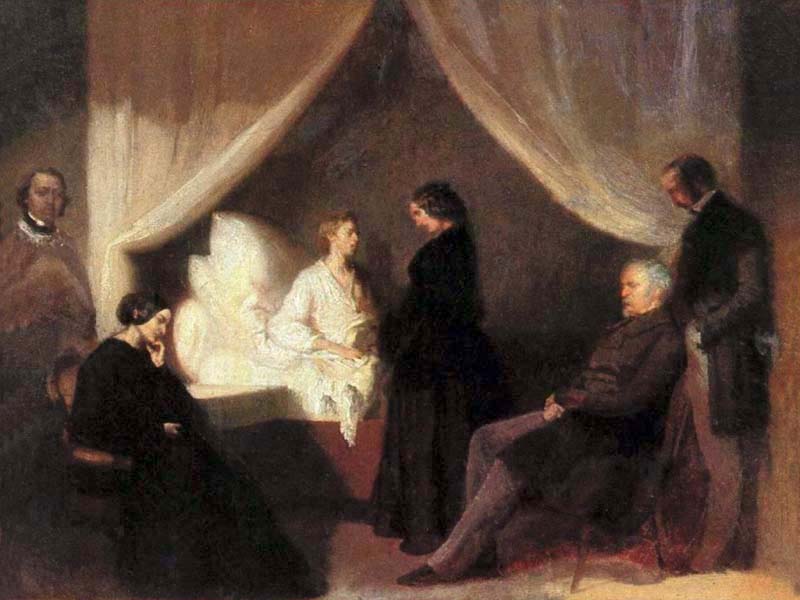Apart from being contemporaries, you might think Frédéric Chopin and Giacomo Meyerbeer had little in common. But though one composed almost exclusively for the piano and the other almost entirely for the opera house, they shared a surprisingly common 19th-century phobia. They were both terrified of being buried alive.
 Kwiatkowski’s Chopin on His Deathbed, 1849
Kwiatkowski’s Chopin on His Deathbed, 1849
It may seem an unlikely worry to folks today, but before the 18th century discovered artificial resuscitation it was quite a thing. So common was the problem, it even has a name: taphophobia, from the Greek taphos, meaning grave.
Our two composers were in illustrious company. George Washington, Hans Christian Andersen, Arthur Schopenhauer, Nikolai Gogol and Auguste Renoir were all fellow suffers. Andersen, whose long list of phobias included dogs, pork (though not pigs) and fire – he used to carry a rope for emergencies at all times – used to sleep with a note on his bedside table saying: “I only appear to be dead”, and some say he even wore it around his neck. Schopenhauer insisted that his corpse remain aboveground for five days while Gogol’s will specified that he not be buried until he was putrefying.
Perhaps...










Comments
Log in to join the conversation.